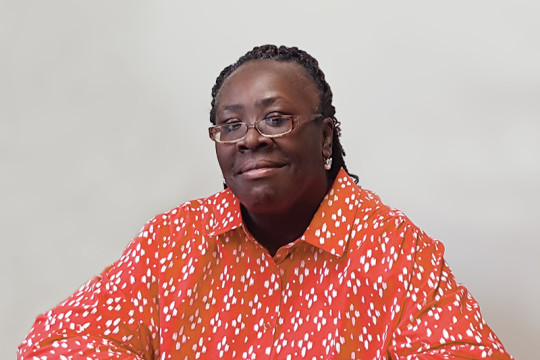
Four-and-a-half years ago, Loretta Fleming weighed 378 pounds and had a blood glucose level off the charts.
When handed a flyer for a workshop series on diabetes self-management by a man who pegged her as someone who might have the disease, she figured, “What do I have to lose?” Over the next few weeks, the one-time nurse’s aide attended weekly classes. The information changed her life – over the subsequent months she would lose 130 pounds and cut her blood glucose level in half. She’s now working on helping her sons – her 31-year-old who has diabetes and her 18-year-old who has just learned he has prediabetes.
“I learned to read labels, to eat in moderation and in portions,” she says. “I learned how to be an advocate for myself by making sure the doctor explains things on my terms and that it was okay to ask questions.”
Loretta embraced the program with such a passion that soon she enrolled in the organization’s intensive seven-week peer education course, learning a curriculum developed by the Stanford Patient Education Research Center. This certified her – and the others in the room – to become an instructor for Health People’s Diabetes Self-Management Program.
Since then, she estimates that she’s brought this information to about 125 people in her community, many of whom she says lacked even the most basic knowledge of a disease that if not controlled can wreak havoc in their lives. Multiply that number by the other people sitting around the table that morning, women like Heidi Rodney, a one-time teacher with diabetes, who now makes healthy smoothies instead of drinking soda, and is overjoyed to be teaching again; Pamela Washington, who lost 28 pounds after taking the workshop, and has since been a diabetes peer educator to drug addicts with the disease; and Nadeem Moore, who has prediabetes and family members who have suffered the cruelties of uncontrolled diabetes, including amputations and blindness, and teaches her students “not to cross the line.”
The workshops, with each class taught by two peer educators, in both English and Spanish, provide 12 to 20 students with plenty of critical information – how to eat healthy, monitor their blood sugar, exercise, think positively, take their medication, care for their feet, communicate with their health providers, and handle stress. Students develop a weekly action plan, which spells out how many hours a day and for how many days that week they will follow their plan (to walk two miles, cut down on soda, stay away from sweets) and rate, on a scale of one to 10, how much confidence they have in achieving it. Should they fall short, they can then ask the class and teachers for steps they can follow. For example, if someone is still buying soda, they learn to avoid that aisle when shopping.
Loretta Fleming, meanwhile, routinely sees her students in the neighborhood, many of whom give her a hug for how she helped change their lives. “They come up to me to let me know how they’re doing and to tell me that ‘A lot of the stuff you taught me, I’m still doing in my life,’” she says.
She has little doubt about the effectiveness of her efforts. “This is a program that I know works,” she adds. “It can work for anyone. Just look at me.”
The strategy used by Health People to fight diabetes, the Bronx’s most resistant foe, is a simple one: find compassionate people in the community who have witnessed the disease first-hand, give them the tools they need to fight back, and then release them into the community to help others. Health People is one of the 200-plus organizations in SBH Health System’s Bronx Partners for Healthy Communities, whose shared mission is to change the health of people living in the state’s least healthy county. On a cool March day, a dozen or so of Health People’s “diabetes peer educators” sit around a conference table in a walk-up in the south Bronx, passionately discussing what brought them here and how they are changing the lives of those caught up in the county’s diabetes epidemic.
 GIVING
GIVING (718) 960-9000
(718) 960-9000